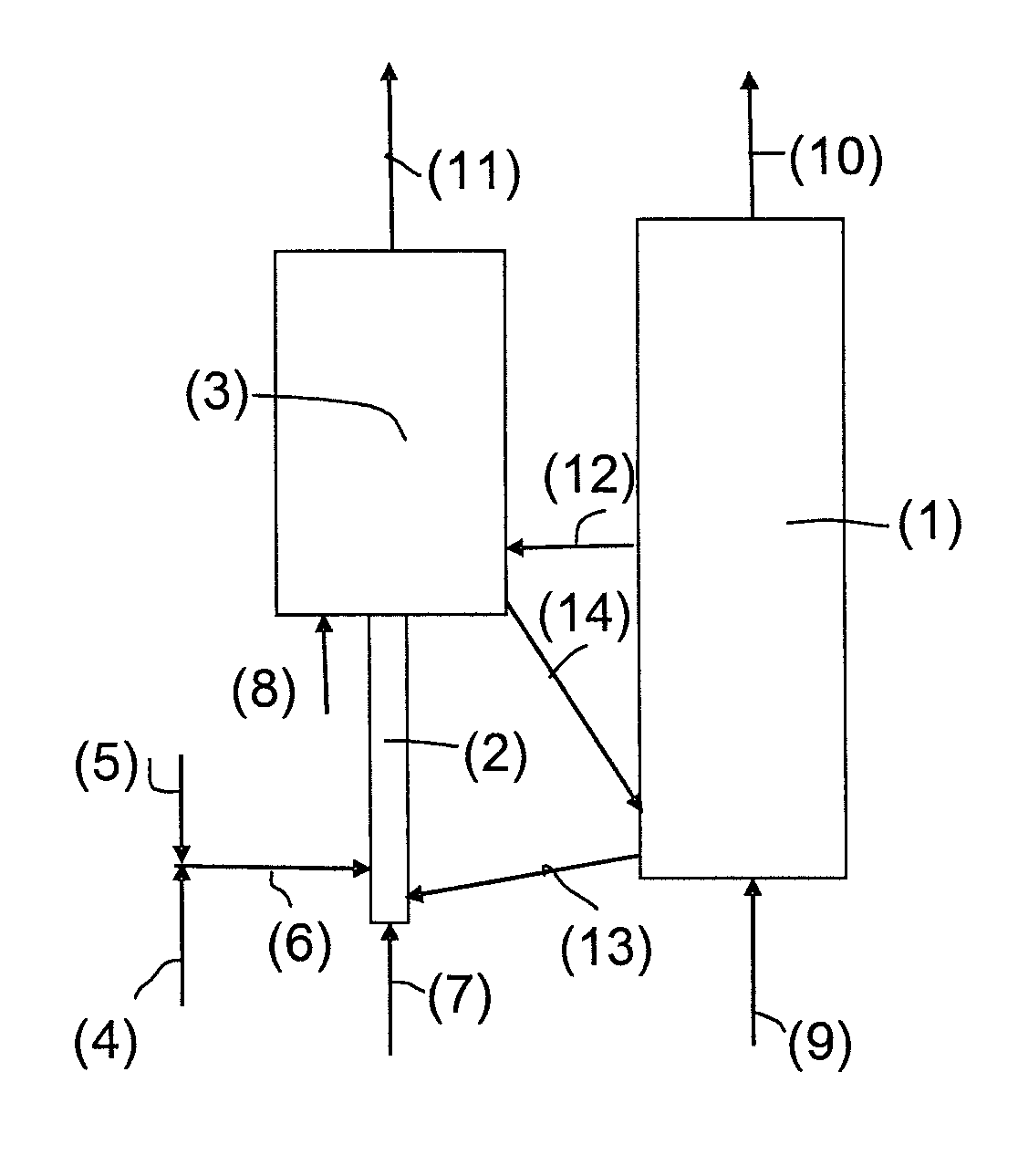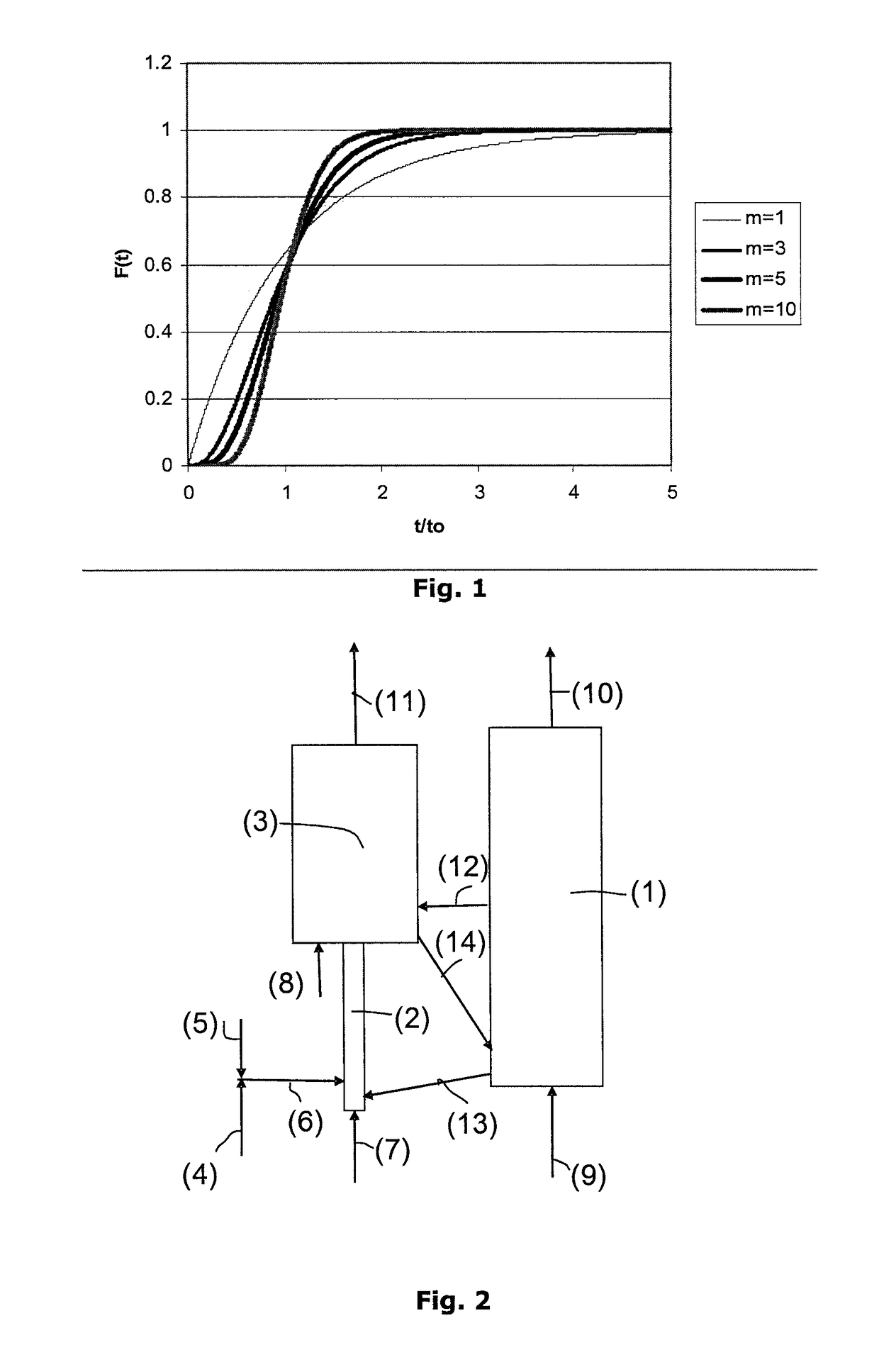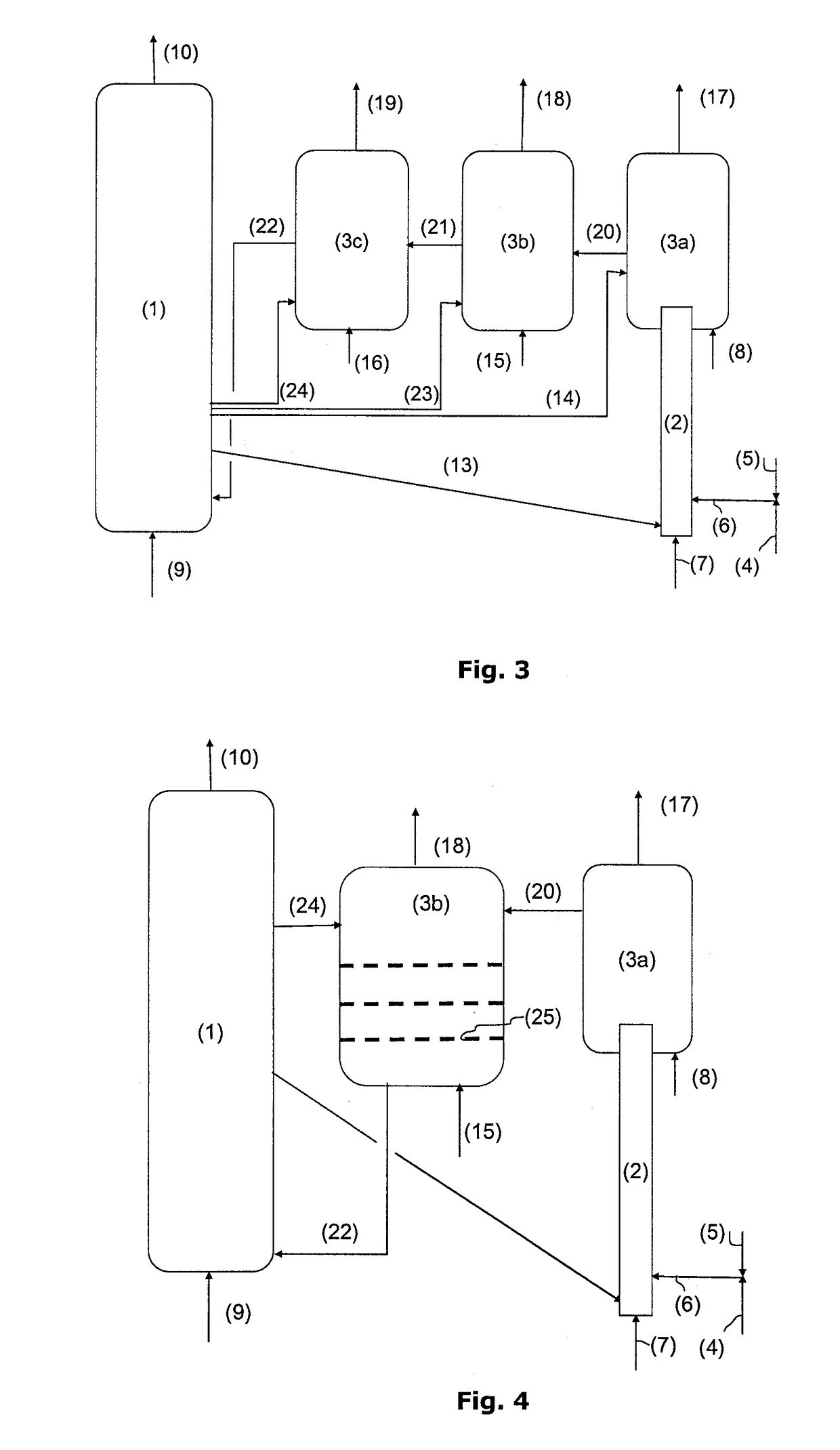Optimised method and device loop combustion on liquid hydrocarbon feedstock
a technology of hydrocarbon feedstock and loop combustion, which is applied in the direction of combustion types, furnaces, capillary burners, etc., can solve the problems of large amount of metal oxides in contact, large amount of coke, and inability to separate still coked oxide particles from non-coked particles, so as to minimize energy dissipation in form of pressure drop, increase dilution evenness, and good heat dispersion
- Summary
- Abstract
- Description
- Claims
- Application Information
AI Technical Summary
Benefits of technology
Problems solved by technology
Method used
Image
Examples
examples
[0099]The performances of a combustion unit operating under chemical looping combustion conditions and treating a liquid feed consisting of a petroleum vacuum residue whose analysis is given below have been calculated.
[0100]
TABLE 1Wt. %C85.2H10.3N0.5S4
[0101]The metal oxide used is a titanium and iron ore capable of transferring during chemical looping combustion 1 wt. % oxygen in relation to the mass of particles used. The amount of residue treated by this unit is 30 kg / s. The particle circulation required to provide combustion of the residue is 34,000 t / h.
[0102]In a first case, the CO2 capture rate S (corresponding to the amount of CO2 recovered in the residue combustion zone through metal oxide reduction in relation to the total amount of CO2 emitted by the facility) is calculated for various unit configurations.
[0103]In example 1, the reaction zone considered for providing combustion of the residue through metal oxide reduction is a simple fluidized bed operating at a superficial...
PUM
 Login to view more
Login to view more Abstract
Description
Claims
Application Information
 Login to view more
Login to view more - R&D Engineer
- R&D Manager
- IP Professional
- Industry Leading Data Capabilities
- Powerful AI technology
- Patent DNA Extraction
Browse by: Latest US Patents, China's latest patents, Technical Efficacy Thesaurus, Application Domain, Technology Topic.
© 2024 PatSnap. All rights reserved.Legal|Privacy policy|Modern Slavery Act Transparency Statement|Sitemap



